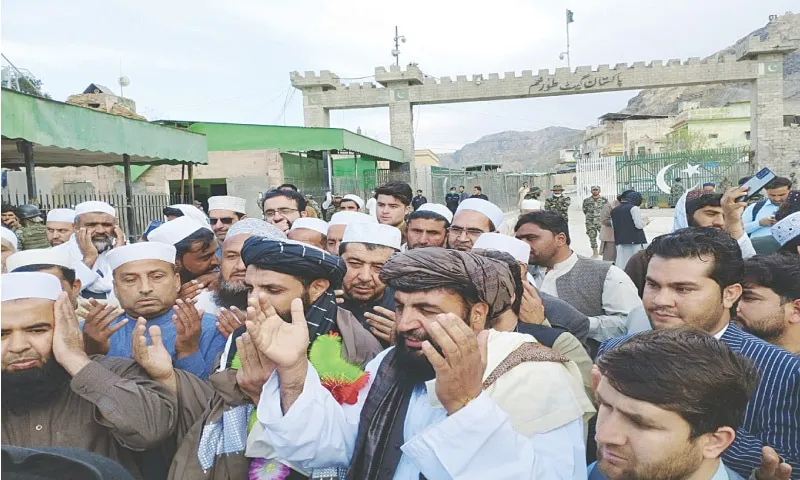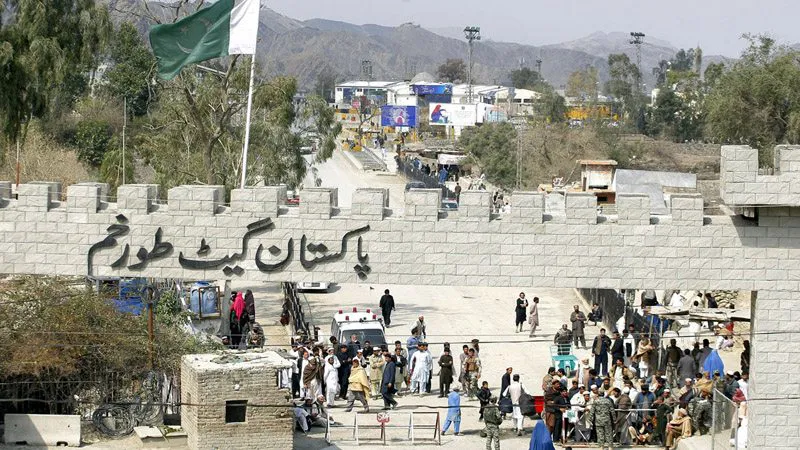Islamabad/Torkham, March 20: After nearly a month of tensions and diplomatic negotiations, the Torkham border between Pakistan and Afghanistan was reopened on Wednesday for trade and medical emergencies.
The reopening followed intense shuttle diplomacy led by tribal elders from both sides, marking the end of a dispute that had resulted in the border closure since February 20.
The reopening ceremony, which lasted about half an hour, took place at zero point in the afternoon.
Torkham Border Reopening Ceremony
The ceremony was followed by the resumption of vehicle crossings, including ambulances that were stationed nearby to transfer critically ill Afghan patients to Pakistan.
As the traffic flowed, police hurriedly regulated the heavy vehicle movement, with frustrated transporters eager to cross before the sunset.

During the ceremony, Younas Momand, a representative from the Afghan Chamber of Commerce and Industry, and Shah Khalid Shinwari, the tehsil chairman of Landi Kotal from Pakistan’s side, delivered brief speeches emphasizing the importance of keeping the border open permanently.
Read More: Impact of International Trade Agreements on Pakistan
Both leaders called for resolving all border-related issues through ongoing consultations and dialogue.
They also expressed their gratitude towards the security officials and the jirga members for their tireless efforts in resolving the matter, urging both sides to honor the commitments made in the last ten days and avoid negative propaganda.
Following the speeches, the two sides offered collective prayers, hugged, and exchanged flowers in a gesture of goodwill.
A vehicle loaded with coal from Afghanistan entered Pakistan, while another vehicle carrying cement crossed into Afghanistan.
Diplomatic Efforts and Border Security Measures
The reopening came after a critical morning meeting between border security officials from both countries, during which they agreed to suspend any further construction activities at the border until the dispute is fully resolved.
The border was initially reopened for vehicular traffic and critical medical patients, with plans to restore pedestrian movement in the coming days.
Also Read: Committee to Present Findings on Peshawar-Torkham Expressway within 72 Hours
Reliable sources indicated that backdoor diplomatic channels between Peshawar and Jalalabad played a key role in the border’s reopening.
The first round of talks between the jirga members took place on March 7, with the second round on March 17 at Afghanistan’s Gumruk (customs offices).
The discussions led to the mutual agreement to resolve the differences and reopen the border immediately.
Torkham Border Reopening Ceremony: Impact of Border Closure
The Torkham border is one of the busiest and most crucial trade routes between Pakistan and Afghanistan.
The border had been closed due to differences over the construction of a security check post near zero point, which escalated into tensions and a gun battle between both sides from March 3.
Also Read: Pak-Afghan Trade Halt at Torkham Crossing Causes Over $10 Million in Losses
This led to the formation of a 57-member jirga on March 7, which was later reduced to 36 members.
Local traders expressed concern over the significant financial losses caused by the prolonged closure.
They estimated that Pakistan lost approximately $40.5 million in potential revenue, and Rs 545 million was lost daily due to the ban on imports from Afghanistan during the border shutdown.
Before the closure, the daily trade volume at Torkham included about 350 export and import vehicles, which surged to nearly 800 vehicles per day.
As the border reopens and tensions ease, both countries hope to restore the economic benefits that come from smooth trade and strengthen their bilateral relations.
